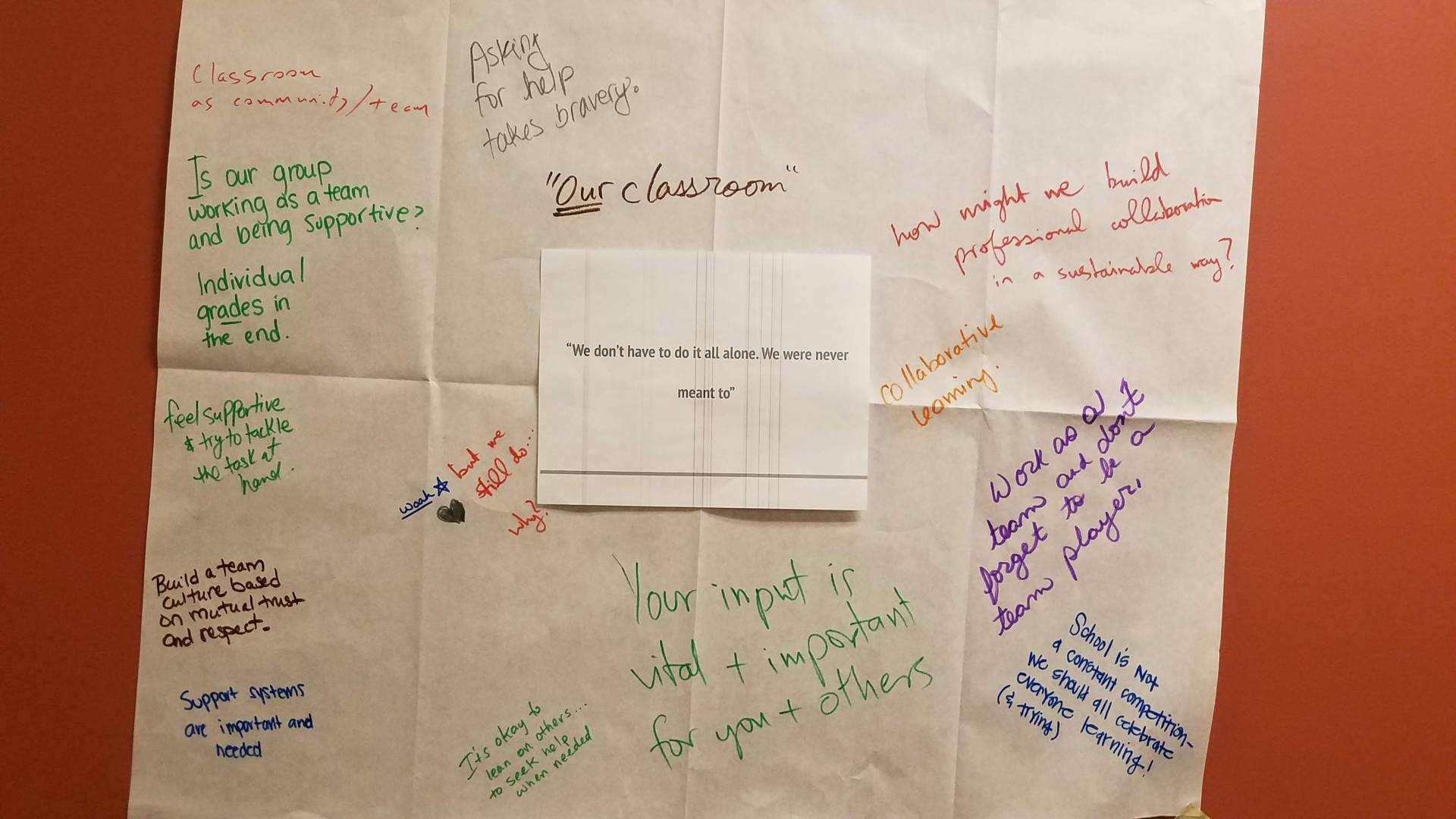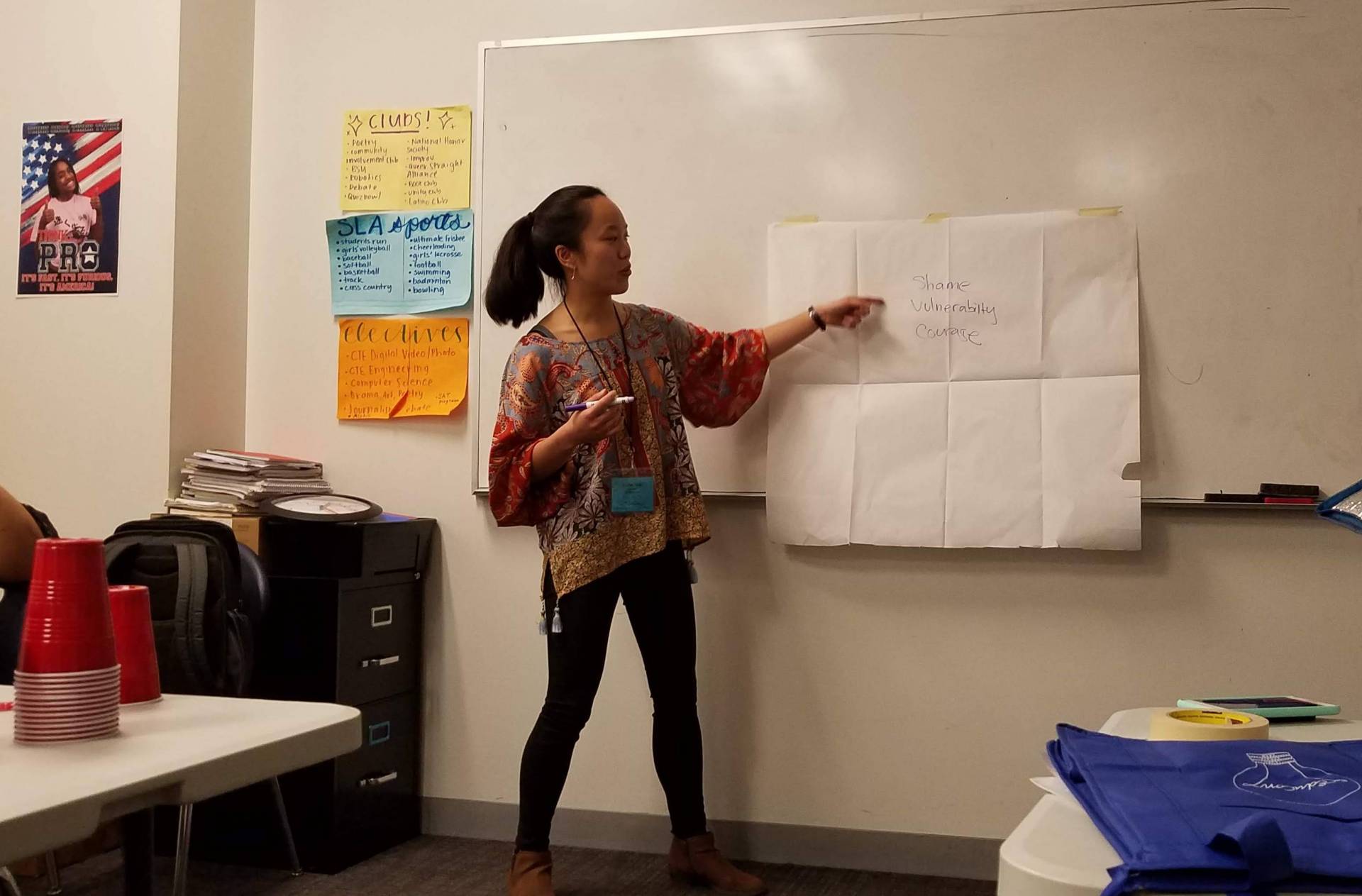Three Steps for Strengthening Communication and Resilience in Science Class
Author: Kara Newhouse
Go to Source
Debbie Barkley held her string tightly and directed the teachers around her to tug theirs downward as they maneuvered a rubber band around the sides of a red Solo cup. “This is so frustrating,” Barkley said when one of the cups fell over, not for the first time. “My fifth graders would be yelling at each other at this point.” A few minutes later, when the group succeeded in stacking several cups in a prescribed arrangement, teacher Ami Patel-Hopkins, exclaimed, “Oh, I love my group!”
That range of emotions is what Kathleen Tsai, a chemistry teacher who facilitated the exercise, expected. “It’s frustrating but then you have a sense of fulfillment,” she said during a group reflection at EduCon 2020, a school innovation conference. “The amount of frustration I feel when I do this is the same as my students feel when they’re doing algebra. I’m sweating when I’m stacking cups; they’re sweating when they’re doing homework.”
Empathizing with students’ emotional experiences was a central component of the workshop that Tsai led on cultivating resilience in science class. Educators have increasingly focused on the role of social and emotional learning in school culture and student success, but participants at Tsai’s session said the opportunities to teach such skills arise more naturally in humanities courses. At the same time, they agreed that collaboration and the ability to persist through failure are critical in science. Through Tsai’s exercises and reflections on their classroom experiences, the group discussed how to strengthen communication and build resilience among their students.
Start Early
Devoting time early in the year to cooperative games allows students to practice healthy communication and conflict resolution before academic content is in the mix. Tsai, who teaches at Science Leadership Academy Beeber — a project-based learning school — does the cups activity with her students in the first week of class. By trying it themselves, the EduCon participants experienced some of the emotions that students might during group work. In the discussion, one teacher said she found having clear roles helpful as problems arose. (Before the activity began, group members elected to be communications manager, resource manager, task manager or group manager. Tsai provided explicit descriptions for each role.)
Tsai pointed out that when one of the groups asked for tips, she told them to figure it out, rather than giving them the answers. Whether with cups or lab work, students often hate that response, Tsai said, and several teachers shouted “yes!” in agreement. Overcoming such hurdles in a low-stakes cooperative game creates a foundation of resilience that can be strengthened as students face similar challenges when science content and grades are involved.
The group discussion, too, was a model for classrooms. As one teacher noted, talking about what behaviors were productive and unproductive in the cups game helped him reflect on how he reacted to the exercise and his teammates. Tsai suggested some “actionable norms” that can come from student discussions about cooperative games: work persistently, take risks and communicate productively.
Build Emotional Vocabulary
Tsai said her first year of teaching was emotionally challenging. She eventually realized this was unsurprising, since she was surrounded by emotional teenagers every day. “Students say things like ‘I can’t do this,’ ‘I give up,’ ‘I hate this/I hate you,’” Tsai said. “What they really mean is ‘I’m frustrated.’”
During the EduCon session, teachers did a gallery walk focused on statements about vulnerability, shame and courage. When teachers can get in touch with those three emotions themselves, she said, they are better equipped to help students navigate them. Tsai has begun talking directly about those feelings with her students.

The gallery walk quotes came from researcher Brené Brown, whose books and talks have helped Tsai develop emotional vocabulary for herself and her students. Different resources might resonate for other teachers. “Think about what the students struggle with,” Tsai said. “How do you help yourself with that?” That’s a good starting point.
Practice/Repeat
As with other types of learning, social emotional learning is not a one-and-done process. Tsai creates opportunities to practice social and emotional skills throughout the curriculum. On her blog, she recently shared an activity for teaching active listening skills. After Tsai modeled active listening and provided sentence starters, her students tried it out with topics they chose. Eventually, they progressed to a topic relevant to their studies — gene therapy and bioethics. Tsai wrote that she used to hate class discussions “because the students never actually listened to each other,” but at the end of these conversations her students reported feeling engaged and challenged.
Ami Patel-Hopkins, who teaches at Science Leadership Academy Middle School, shared that she uses neuroscience to connect social and emotional skills to science content. By teaching about parts of the brain associated with emotional responses, she increases students’ awareness of what might be happening in their own brains and bodies in stressful moments. She said she peppers her classes with relevant reminders, such as “Use your prefrontal cortex!” when a task requires thoughtful decision-making.

Other teachers at Tsai’s session agreed that building social and emotional skills in science class will require repetition and practice in different contexts throughout the year. They ended the workshop by offering six-word summaries of their takeaways, including:
- “You should model for your students.”
- “It’s a mitzvah to be corrected.”
- “Emotions underpin all academic work, period.”
